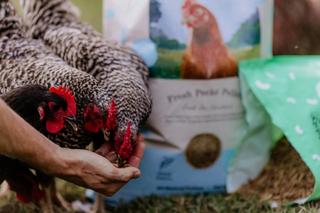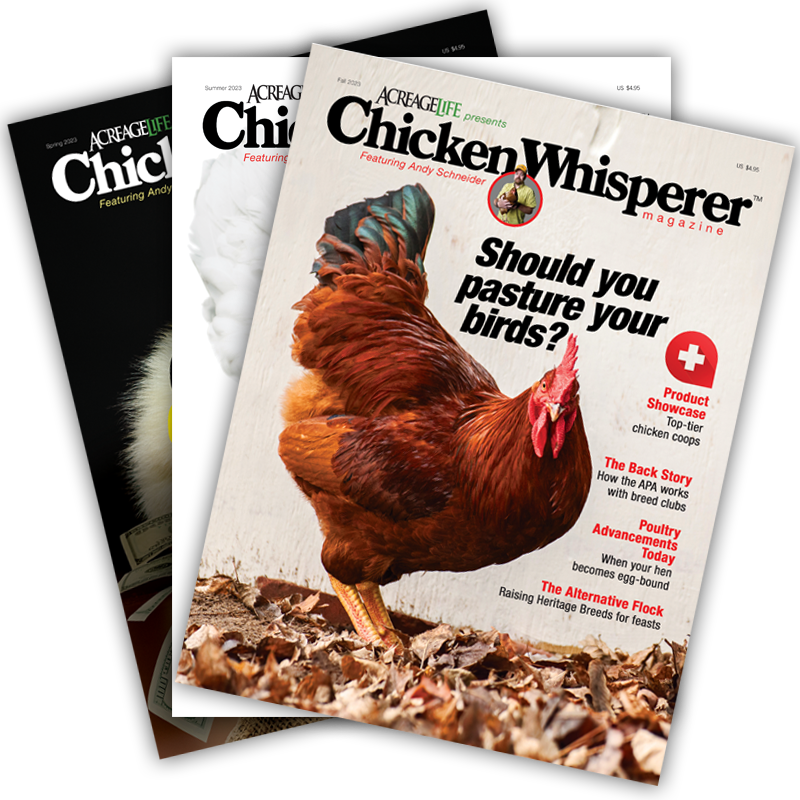Building Better Barns
The Future of Poultry Operations


(Sponsored Content) — Poultry farmers and backyard keepers alike are facing more pressure than ever before. Rising energy costs, tighter animal welfare standards and the constant risk of disease all make it harder to maintain healthy, productive flocks. For many producers, every season brings new challenges that test both budgets and management skills.
At the center of every operation whether it’s a commercial farm or a small backyard coop is one factor that often goes overlooked: the barn. It’s more than just a structure that keeps out the weather. It’s the environment where birds live, grow and thrive.
A well-designed barn or coop directly shapes flock health, productivity and profitability. When housing is optimized for comfort, airflow and efficiency, birds perform better and farmers gain peace of mind.
Why Barn (and Coop) Design Matters
Inside a poultry house, every detail counts. Birds are highly sensitive to changes in their environment, and even small issues can have big impacts:
- Temperature stability keeps birds comfortable and reduces stress.
- Airflow and ventilation remove harmful gases and moisture while supplying fresh air.
- Space layout affects how birds move, eat and rest, influencing both welfare and growth.
- Proper lighting cycles encourage natural behaviors and support steady development.
When these elements are balanced, flocks stay healthier, mortality rates drop and productivity rises. For both small-scale keepers and commercial producers, smart design isn’t just a nice-to-have it’s the foundation of successful poultry production.
Challenges Poultry Producers Face Today
Modern poultry production is more complex than ever. Farmers are balancing costs, regulations and bird health while trying to keep operations profitable. Among the biggest pressures:
- Rising energy and input costs put strain on farm budgets, especially during extreme weather seasons.
- Disease risks increase in barns or coops with poor airflow, where moisture and gases can build up quickly.
- Animal welfare standards and consumer scrutiny demand housing that supports healthier, more natural environments.
- Labor shortages mean barns must be more automated, efficient and easier to manage with fewer hands.
These challenges aren’t just headlines, they affect farms every day. One producer in Arkansas, for example, reduced winter heating bills by nearly 15% simply by upgrading insulation and ventilation in his poultry houses. The same improvements also reduced dampness and lowered the risk of respiratory issues in the flock. Small changes in design can create meaningful results for both the birds and the farm bottom line.
Smarter Barns Built Around Farmers
No two farms are alike. What works for a broiler operation in Arkansas may not be the right solution for a layer facility in Missouri or a backyard keeper in Alabama. That’s why one-size-fits-all housing rarely meets today’s needs.
Smarter barns and coops focus on
- Ventilation systems that keep air fresh, balanced and safe year-round.
- Climate control strategies for heating, cooling and insulation to stabilize environments in all seasons.
- Efficient layouts that reduce bird stress, improve worker access and streamline daily routines.
- Durable materials and construction designed to handle continuous use and changing conditions.
When barns are designed this way, they aren’t just places to house birds. They become asset structures that improve productivity, protect animal welfare and reduce long-term operating costs.
Benefits of Smarter Barn Solutions
When farmers invest in better-designed barns or coops, the payback is clear across every part of their operation.
- Healthier flocks: Improved ventilation and layouts reduce stress and disease, leading to lower mortality and stronger overall performance.
- Lower operating costs: Energy-efficient heating, cooling and insulation systems cut utility bills and reduce losses tied to extreme weather.
- Better productivity: Smarter layouts make daily chores easier, saving time for workers or family members caring for birds.
- Compliance confidence: Well-designed facilities meet animal welfare and food safety standards without constant adjustments or costly retrofits.
- Scalability: These principles apply on any scale. A backyard keeper benefits from a well-ventilated coop just as much as a commercial producer gains from climate-controlled barns.
At the end of the day, good design creates a win-win: birds thrive, and farmers save time and money.
Beyond Construction, The Value of Partnership
A barn or coop is only as effective as the support that comes with it. Farmers need more than a builder who drops off blueprints; they need a partner who understands the challenges of poultry production and stays involved as needs evolve.
Strong barn partners provide
- Guidance during planning, helping match designs to local climates, flock sizes and production goals.
- Problem-solving during operation, ensuring systems work as intended and making adjustments when conditions change.
- Upgrades and retrofits as needs grow, so facilities stay useful and efficient for years to come.
This farmer-first, support-driven approach turns housing from a one-time investment into a long-term solution. For poultry producers of all sizes, knowing a partner stands behind the barn brings confidence that their operation can meet today’s demands and tomorrow’s challenges.
A Smarter Future for Poultry Farming
Poultry farming is changing quickly. Demand for eggs and chickens continues to rise, while welfare standards, energy costs and consumer expectations grow stricter every year. Farmers whether they manage a few hens in a backyard or thousands of broilers in commercial houses need facilities that can adapt and perform under pressure.
Barns and coops will remain at the center of that success. They are not just shelters; they are the environments that determine how healthy flocks become, how efficiently farms operate and how resilient operations remain in the face of new challenges.
Better barns mean better farms. Partners such as ChickenHouses.com help poultry producers from backyard keepers to large-scale growers build housing that supports healthy birds, saves time and money and ensures operations are ready for the future.
Tags:Chicken Scratch

Chicken Whisperer is part of the Catalyst Communications Network publication family.












